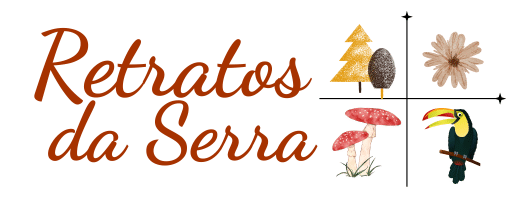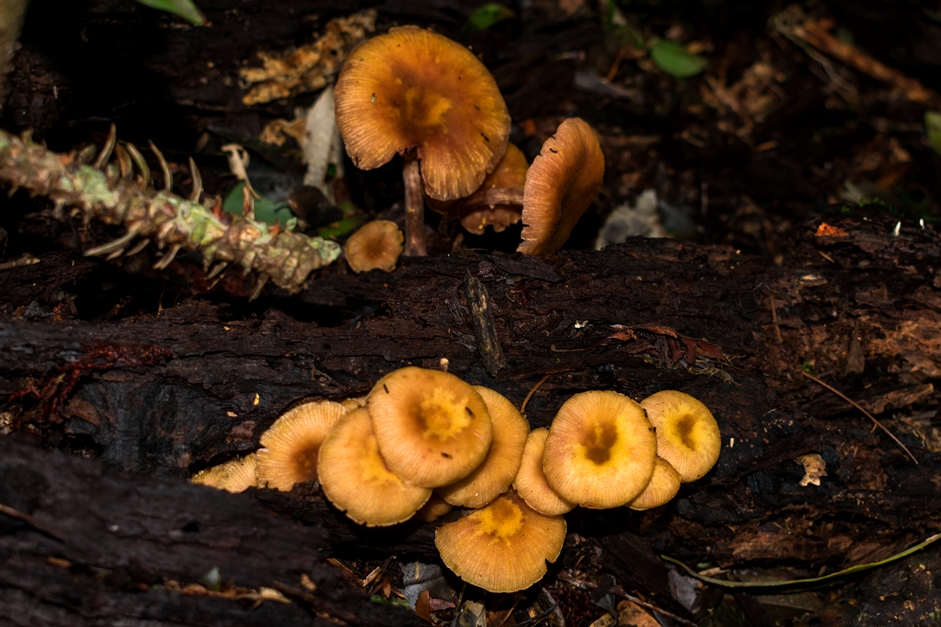Beautiful mushrooms growing on a decaying trunk, inside an araucaria forest.
They had a small delicate ring and when I turned to look at the hymenophore I was surprised by these beautiful pinkish gills. There were about four small groups of mushrooms growing on different parts of the same trunk.
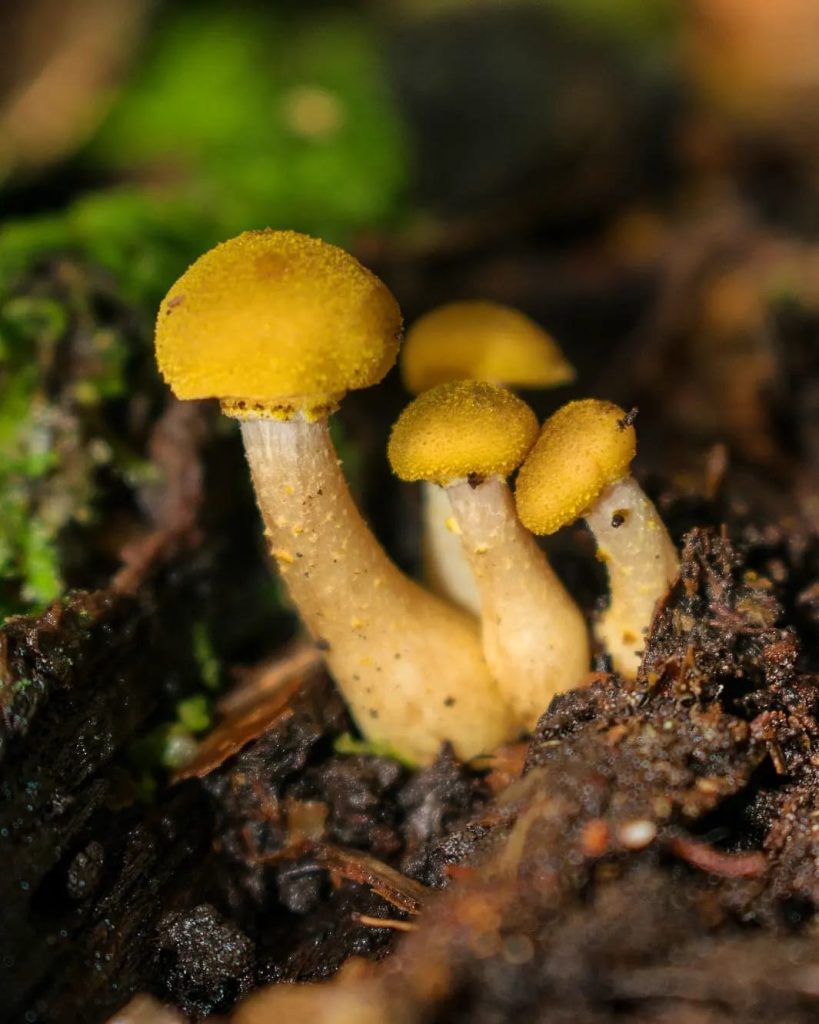
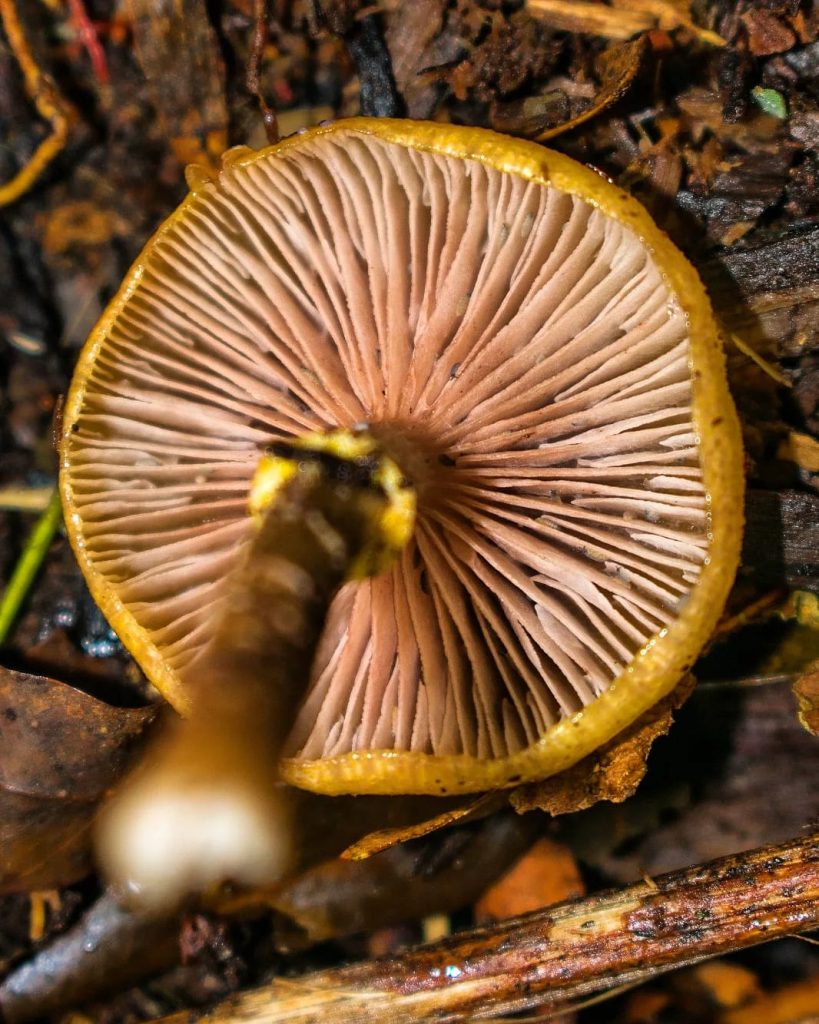
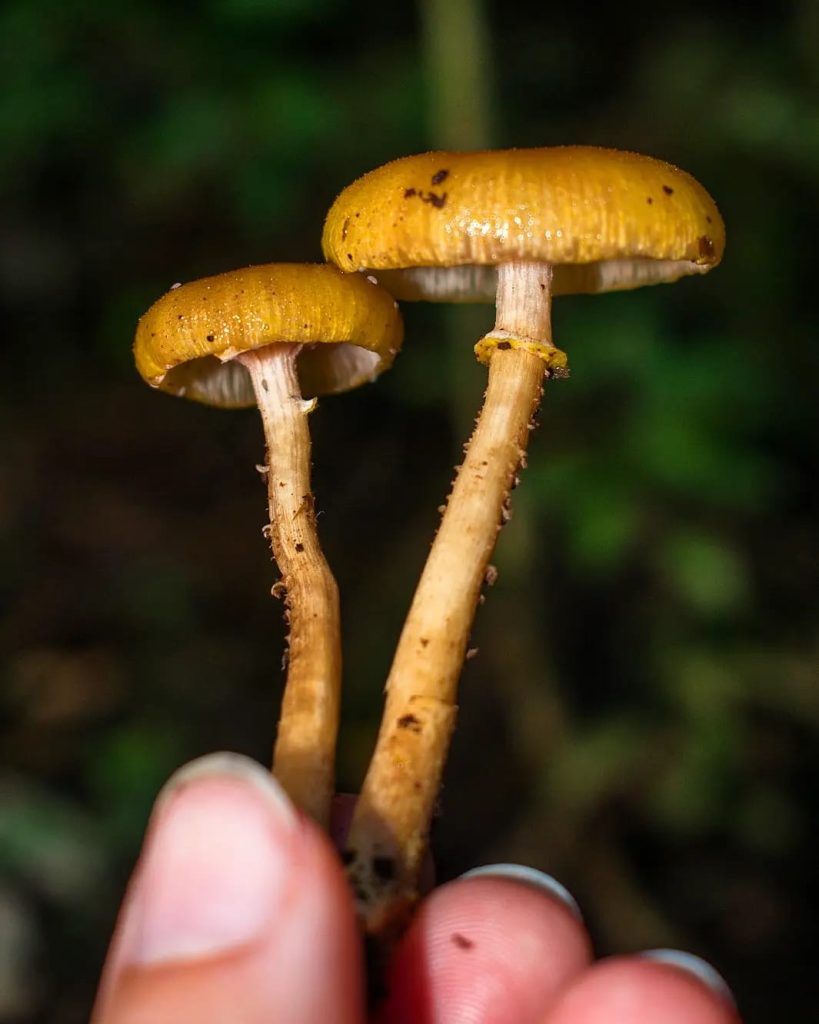
After researching at home, I saw that it was probably from the Armillaria genus, and then I got confirmation on iNaturalist. Mushrooms from this genus are known as “honey mushrooms”. There are some edible species, such as Armillaria puiggarii, which occurs here in Brazil.
I thought that these could be from this species, but I found it difficult to confirm just by looking at photos. From what I saw, several species have very similar characteristics.
I thought it would take a while to find these mushrooms again, but four days later we returned to this area and took a trail even deeper into the forest and they were literally everywhere!
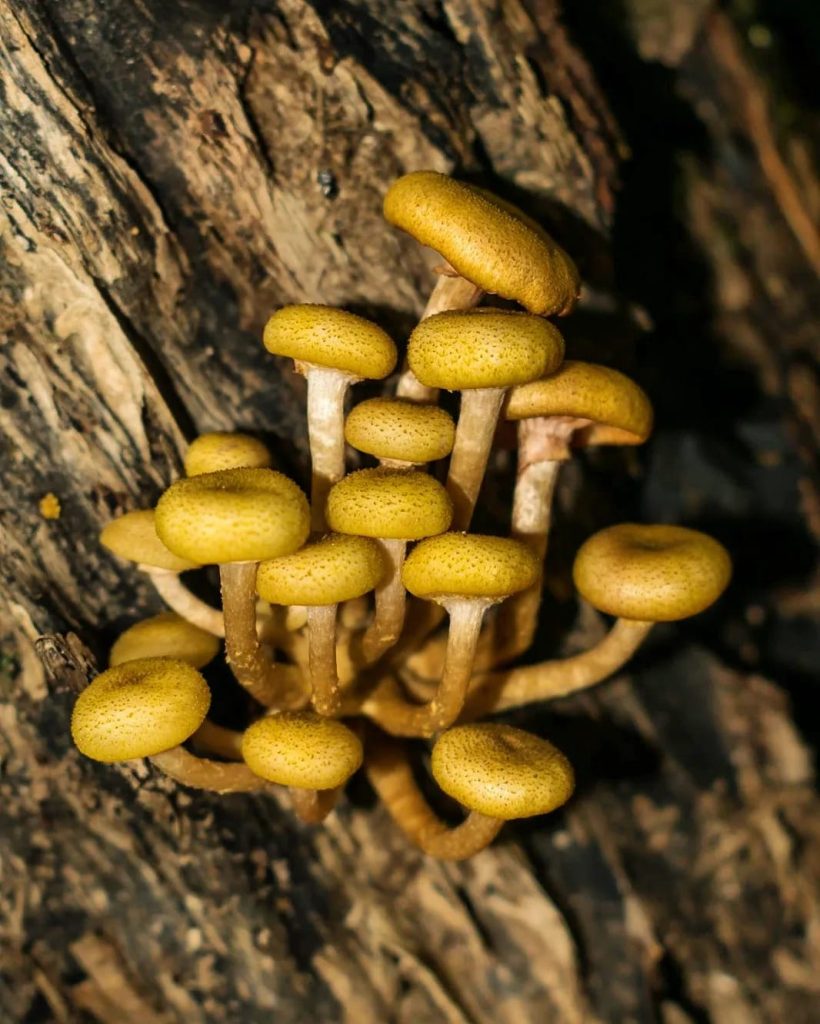
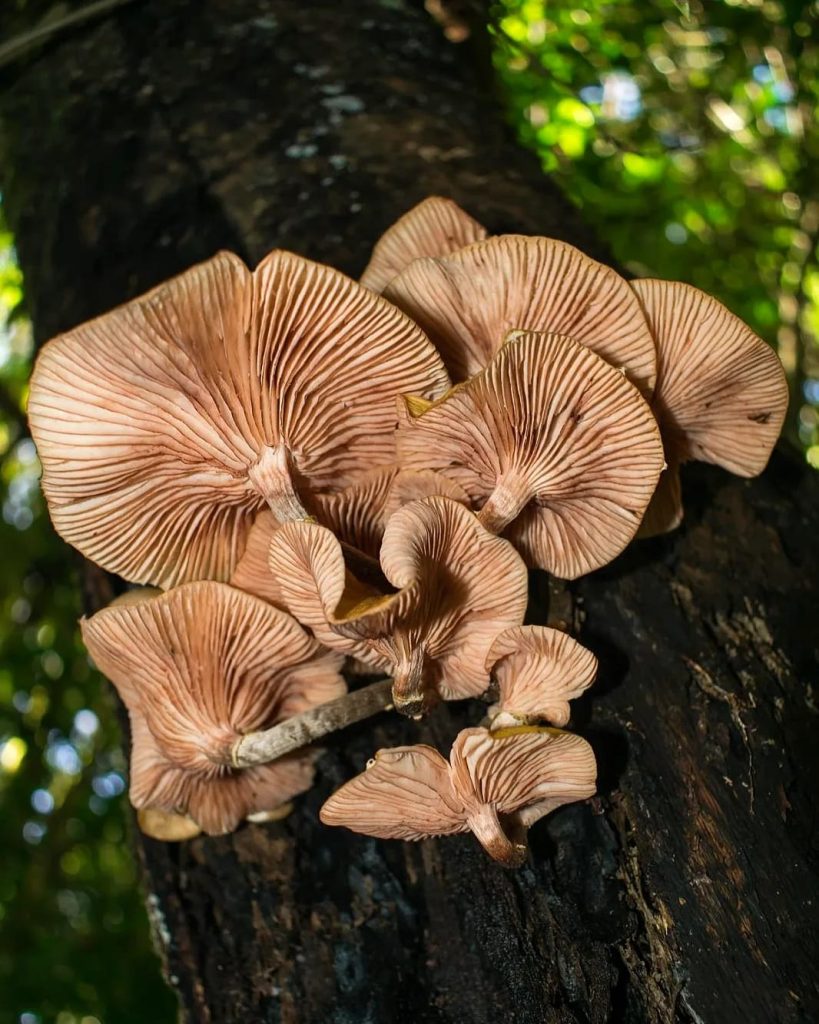
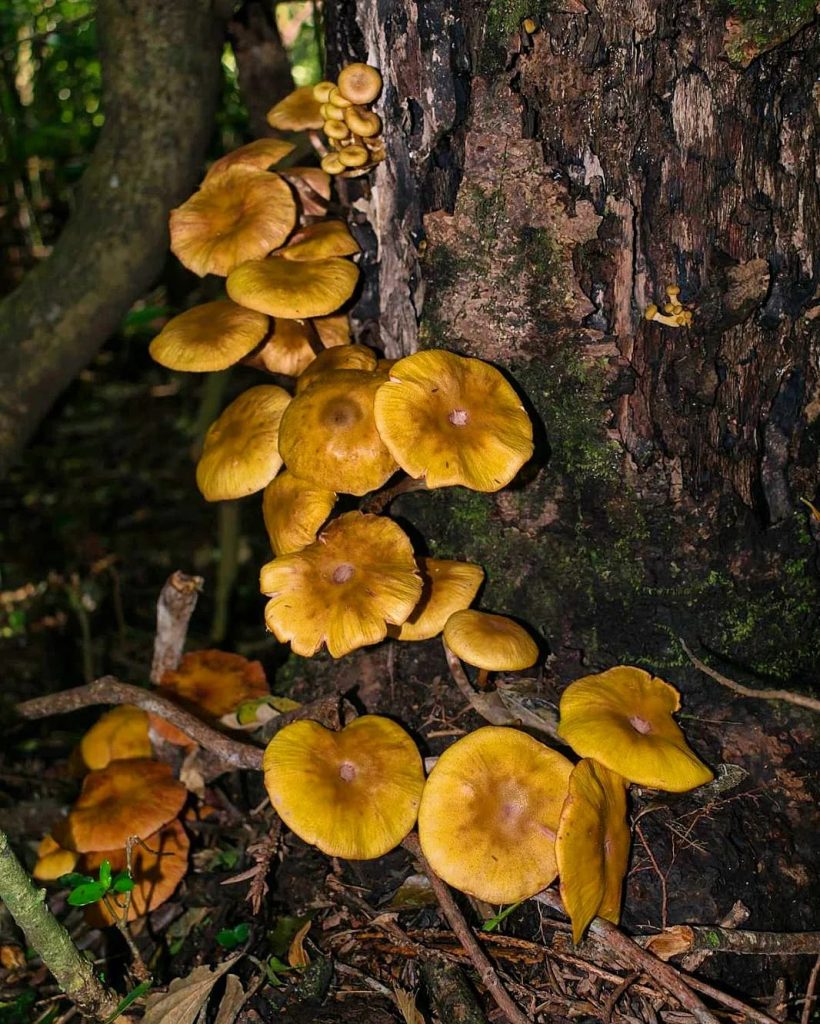
I took pictures of 3 different areas on the same trail, not too far apart, where they were most abundant. I believe that they are all of the species Armillaria puiggarii or something similar. I got confirmation of this identification on iNaturalist.
It is very impressive how they grow in such large groups, on fallen trunks or trees that are already dead/diseased but still standing. I read that this species can be found in Central and South America.
And it is also incredible how different they are when they are young, tiny and have a yellow cap, and then when they are old they can become very large and have this reddish tone – I think that has to do with the level of humidity also, the reddish ones were very wet. I was able to find them in all stages, including several babies (photos below).
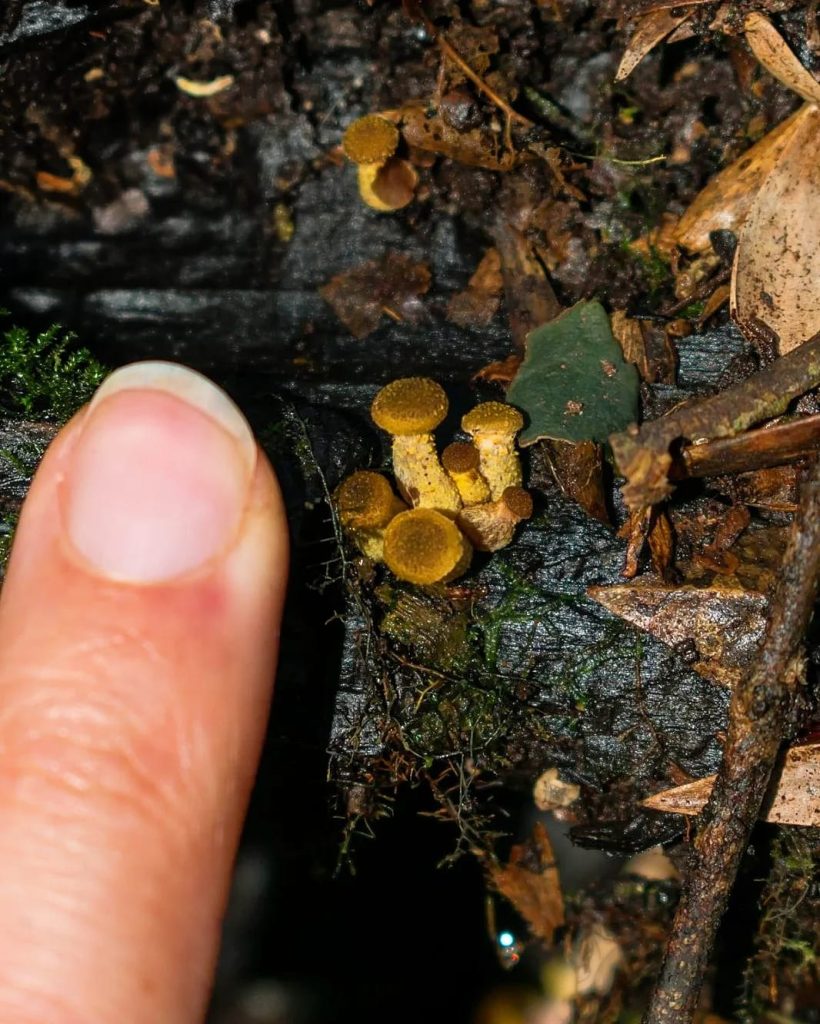
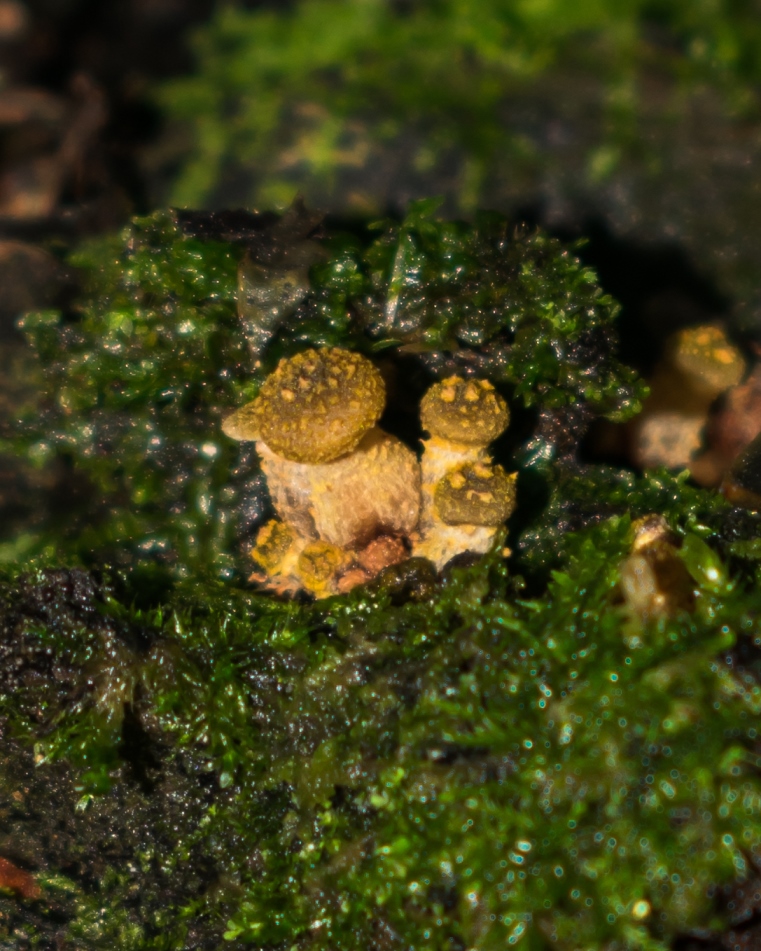
A small, fragile ring, pinkish lamellae and white spores are the characteristics that help identify this species. I saw that they most commonly occur during the winter months here.
Most of the mushrooms we found that day were already a little old, but we still managed to collect several. First, we sautéed and tasted just a little of each one, to see if there would be any adverse reactions.
I read that several species of the genus, even though they are considered edible, can cause gastrointestinal disorders in sensitive people. And that it is also recommended to sauté this type of mushroom well, never to eat it raw.
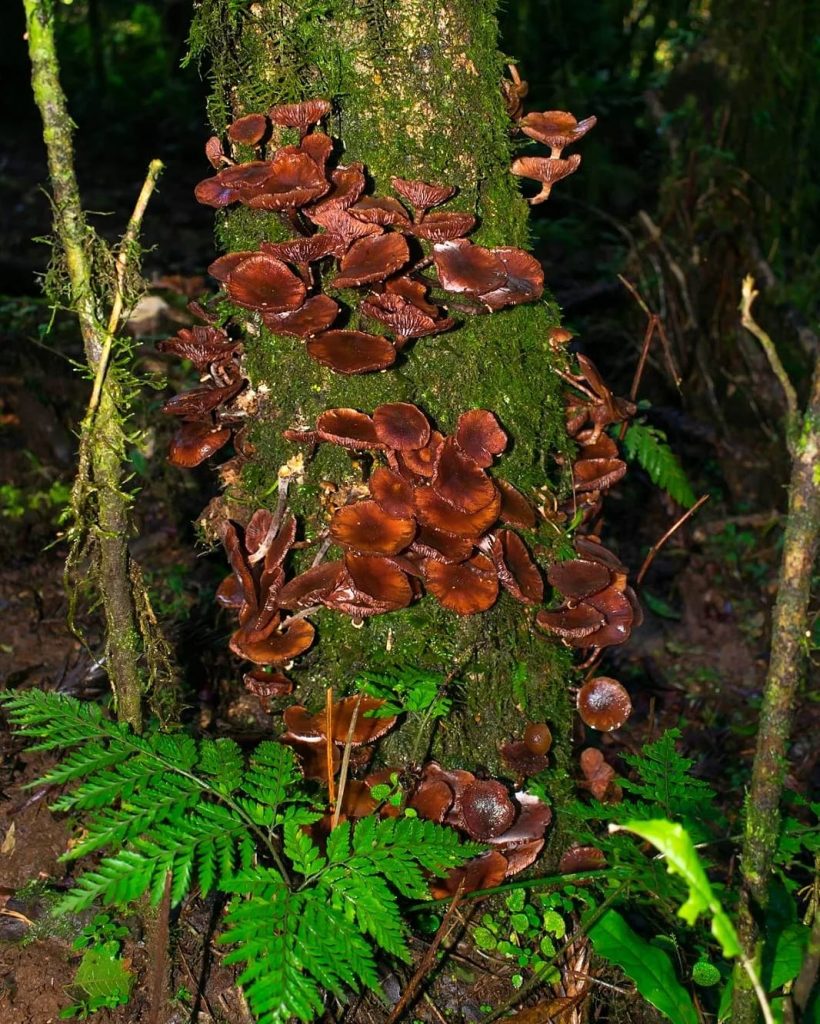
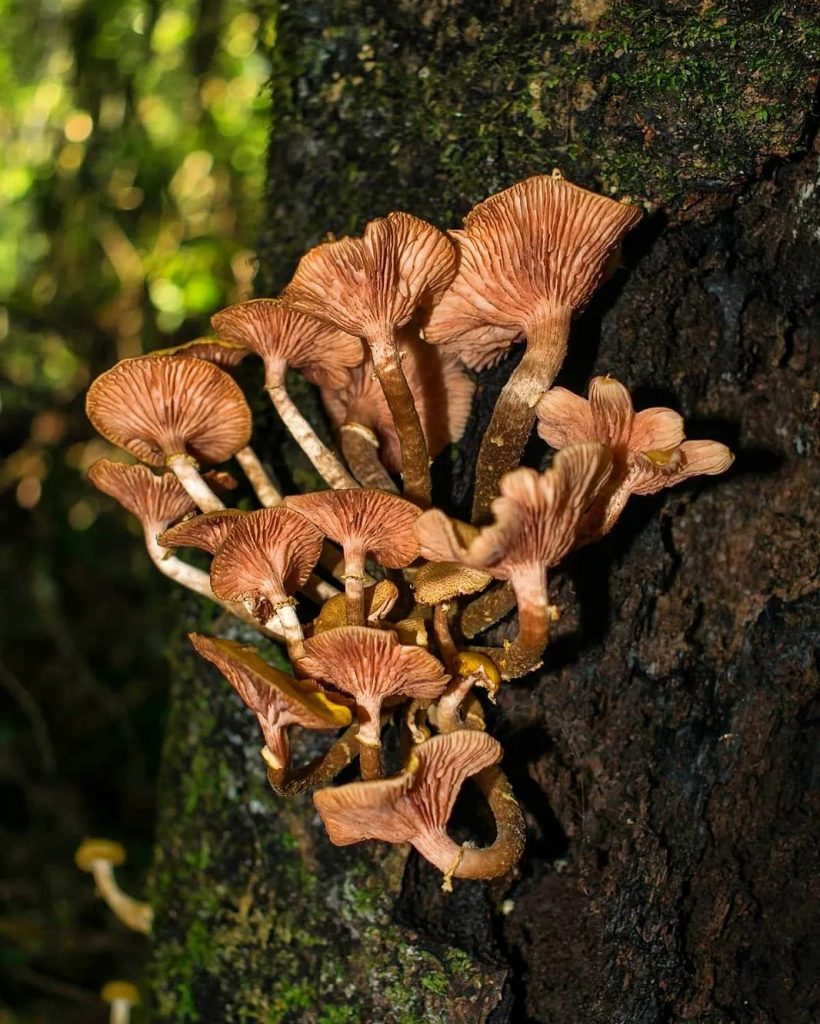
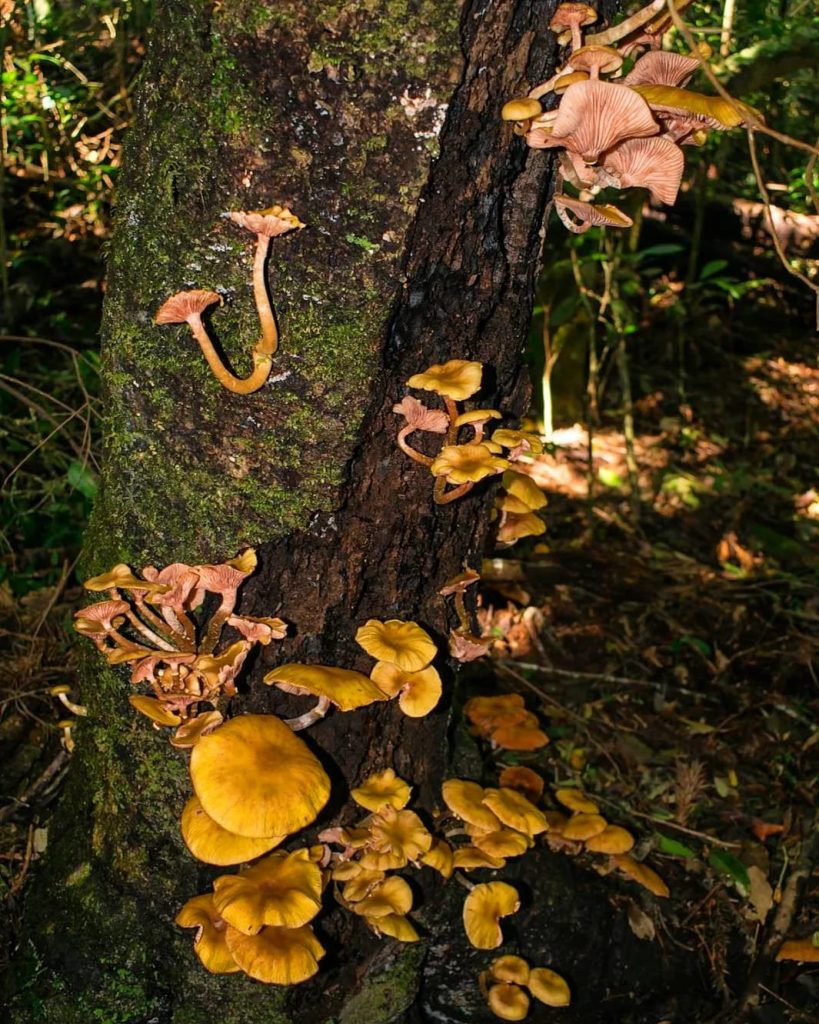
The stem is very hard and fibrous when mature, so we removed it. However, in young specimens it has a more fragile texture, so we left the stem on. They have almost no “meat”, the cap is thin, so they shrink considerably after being sautéed. Fortunately, we didn’t have any adverse reactions, and they are very tasty (but they don’t taste like honey, for those who are curious, lol).
I read that several species of this genus are very popular in certain countries, especially in Ukraine, where they are called Pidpenky and there are many recipes with them. When I posted on my Instagram, Rose Böck mentioned that in the state of Paraná, where there is a large population of Ukrainian immigrants and their descendants, people collect and really enjoy this mushroom – here the name became “Pepenke”.
Now we have discovered and tried another edible mushroom to collect here. These encounters and experiments are always a joy!
📸 Pictures made on 06/18 and 06/22/24 in São Francisco de Paula, Rio Grande do Sul (Serra Gaúcha, South of Brazil).
